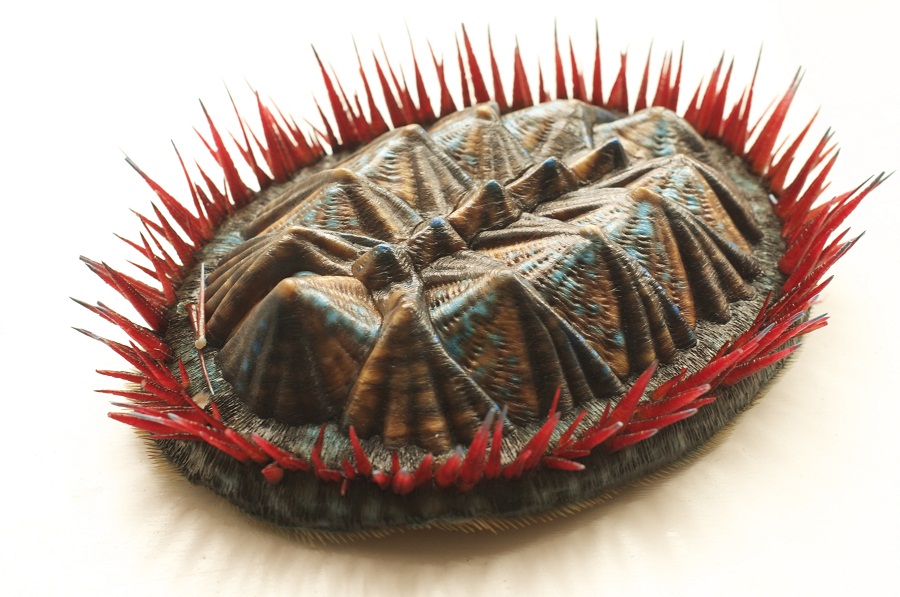Long-Gone Mollusk Comes to Life with 3D Printer

Scientists have created a lifelike model of a long-extinct sea creature using a 3D printer.
The oval-shaped mollusk — a type of multiplacophoran called Protobalanus spinicoronatus — creeped around on ocean floors 390 million years ago with a single, suction-like foot. It also had an imposing armor of stiff plates surrounded by a ring of spines, but scientists were not sure how exactly these features were arranged. Most known fossil specimens of multiplacophorans are broken and decayed.
In fact, scientists are not sure how the multiplacophorans, which are distinguished by their 17 plates, are related to polyplacophorans (also called chitons), another group of armored mollusks.
To find out, a team of researchers used a micro computed-tomography (CT) scan on fossilized fragments of the prehistoric mollusk found in Ohio 10 years ago. The scan gave the scientists an animated view of the creature's shells and spines in their original position; the researchers also used the scan to create a three-dimensional cast of the animal in its reconstructed shape. With this information, along with details on living relatives of this mollusk group, the researchers created a multicolored, textured model made of clay, resin and silicone. The result: a view of what the mollusk looked like millions of years ago. [See Images of Reconstructed Sea Creature]
The species was only discovered in the past decade by private collector and co-author of the study, George Kampouris, who donated the fossil to the Cincinnati Museum of Natural History. The results of the new study, detailed Sept. 18 in the journal Paleontology, are helping to place multiplacophorans on the evolutionary tree, revealing the long-gone mollusks are, indeed, a stem group of chitons.
"We can now demonstrate that multiplacophorans are distant relatives of the modern chitons, which did not evolve until later in Earth history," researcher Jakob Vinther, of the University of Texas at Austin, said in a statement. "We can also show that they evolved a number of characteristics seen in some modern chitons convergently."
Research detailed last year in the journal Current Biology found one such chiton characteristic is vision: West Indian fuzzy chitons (Acanthopleura granulata), which are 3 inches (nearly 8 centimeters) long, sport hundreds of eyelike structures that can make out predators lurking above. However, the vision, which scientists say likely emerged only in the last 25 million years, was a thousand times less sharp than human vision.
Sign up for the Live Science daily newsletter now
Get the world’s most fascinating discoveries delivered straight to your inbox.
Follow LiveScience on Twitter @livescience. We're also on Facebook & Google+.










